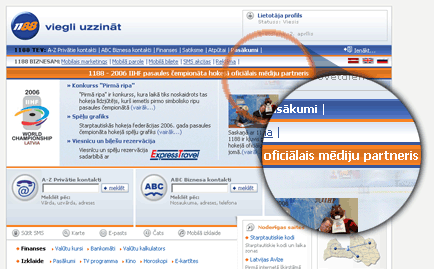Šis Breda Hammerstrona raksts, ko es atradu Graphics Design Forum ir nekas cits, kā brīnišķīgs piemērs tam, kā sākt žurnāla maketēšanu. T.i. – tie nav kanoni, tie nav pamati, tas vienkārši ir ļoti ļoti labs ievads, kā sākt. Pārējais, tā teikt, ir jūsu pašu rokās.
Magazine Layout
By Brad Hammerstron
I do a magazine at least once a month.
We have standard sizes, 1/16, 1/8, 1/4, 1/2 and full page. That’s it.
Our pricing is NOT based on a per column inch rate like a newspaper because a 1/16 page ad usually takes about the same amount of time that a half page ad does, so, our prices are on a sliding scale where a 1/16th page cost is the most expensive. That way if the reps sell a TON of 1/16 (or the MOST common, a 1/4 page ad) we make nothing but gravy on the page.
Once you do one magazine, you’ll get a feel for who is a repeat advertiser and who is not. You can usually take the last issue and clean out all the editorial (except for the repeat editorial personalities or sections) and leave the ads that you think will run again.
Then, as the sales are being made you do a dummy. This is sometimes a bunch of paper that you fold up by hand to imitate the magazine or an InDesign Dummy where you kind of know what advertisers you have. You place the ads so that they don’t compete with each other and the pages are about 25-50% advertizingadvertising on your ratio, some advertising rags go as high as 70% but they’re not magazines.) Once you have all the ads in place THEN you fill the rest with editorial. Hopefullly Hopefullyore than enough editorial to fill the mag, or you’ll be doing callouts and BIG headlines and graphics to fill up the space.
The ads are the most important part. Editorial comes second. You can cut paragraphs, stories, stretch stories over two or three pages to make it fit but you cannot do that with ads. Those are your bread and butter.
Once you have the ads all in place (don’t need to have them designed or proofed yet – just the placement then you drop in the editorial. Pour the editorial over the top, like milk. Let it settle so that the top of your text is even, all your columns line up. (All your text baselines MUST line up or your text will look funny)
Chose 1 font for paragraph text. It should ALWAYS be the same leading and the same point size. Use a common font for this – DO NOT use anything out of the ordinary or “Unique”. If your Art director suggests using anything fancy or weird, ignore him/her.
All your headlines should be the same font as unless there is ONE article in particular you want to get fancy with. DO NOT use more than that or your magazine will look childish.
If you have more than one article on a page, the top headline should be the boldest. Subsequent headlines should get smaller and smaller as they decrease in size and importance.
Your cut lines (captions) should be one point smaller than your paragraph text and italicized. Do not use indentation, bullets or hyphenation on captions.
Your choices are paragraph font, font size and justification you can choose full justification or left aligned, leaving the right jagged sometimes), headline font (size varies), justification , and cut line justification. This is called your style sheet.
Once you have designed one magazine, save these styles in your style settings so that you can easily highlight text and choose a style, whether it’s headline, paragraph or cutline.
Callouts are when a story doesn’t QUITE fit the page and you need to make it a little larger. You pick the most profound sentence in the article and duplicate it in the middle of the story, larger and bold, perhaps a different colour, that’s up to you. It’s a cheat.
Bylines can have their own style too, either use your cutline style or create a new one that looks good, but keep it consistent.
Do your best to avoid clipart. There is no place in a magazine for clipart except in ads (and even then, do your damnedest to avoid it). If you need a graphic for an editorial piece, find a photograph. Clipart is for kids.
Most importantly, find a cover shot. Do not use clipart or put ads on the cover. Find a cover shot early on. there is nothing worse than having an entire magazine done and you’ve got nothing on the cover.
I’ll assume you have your masthead done already. Keep that consistent. Do not move it. It should be bold. It doesn’t necessarily have to be catchy – that’s what your cover shot is for. You can play with it, depending on what the cover shot is.
That’s a start anyway.
